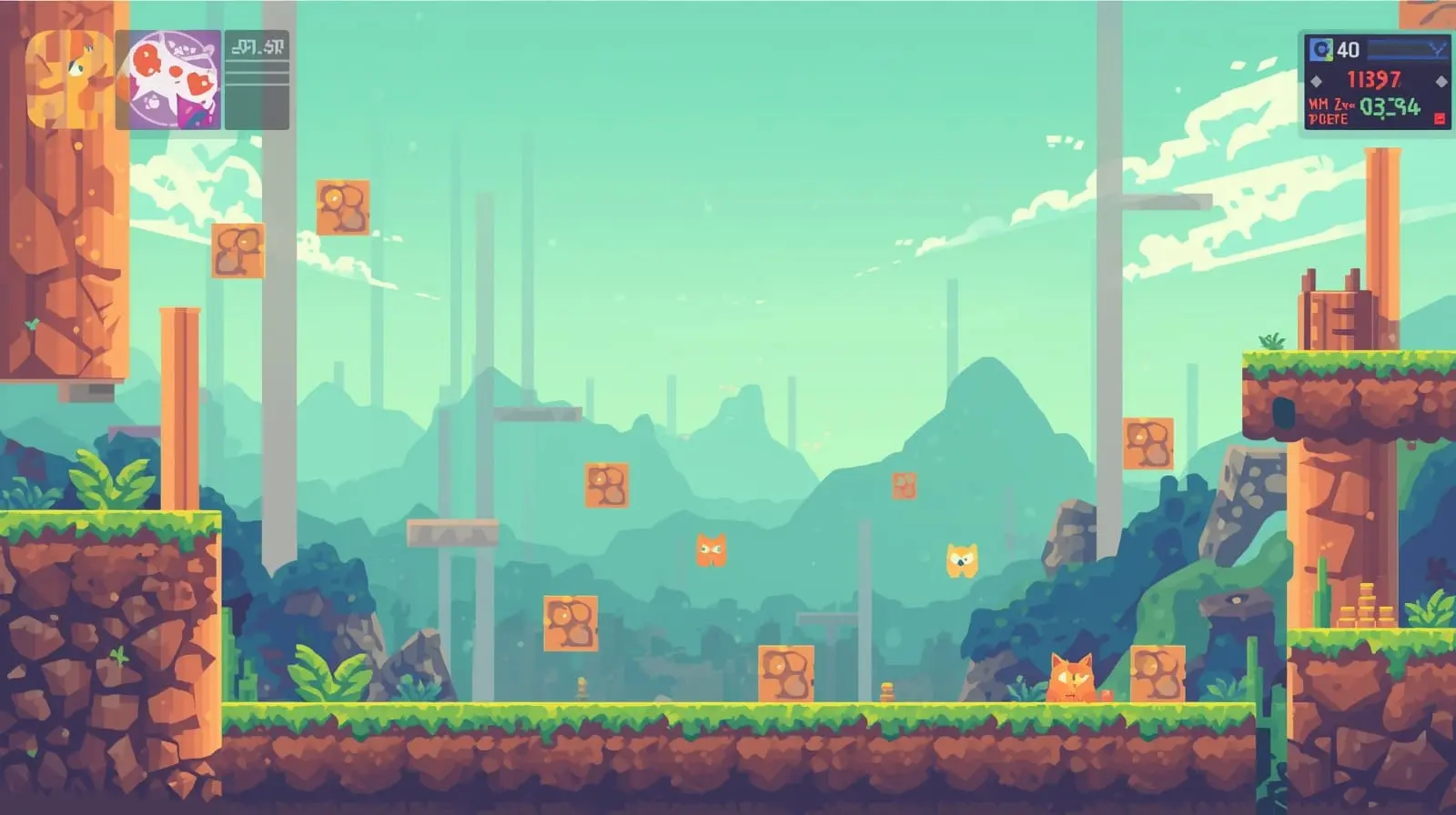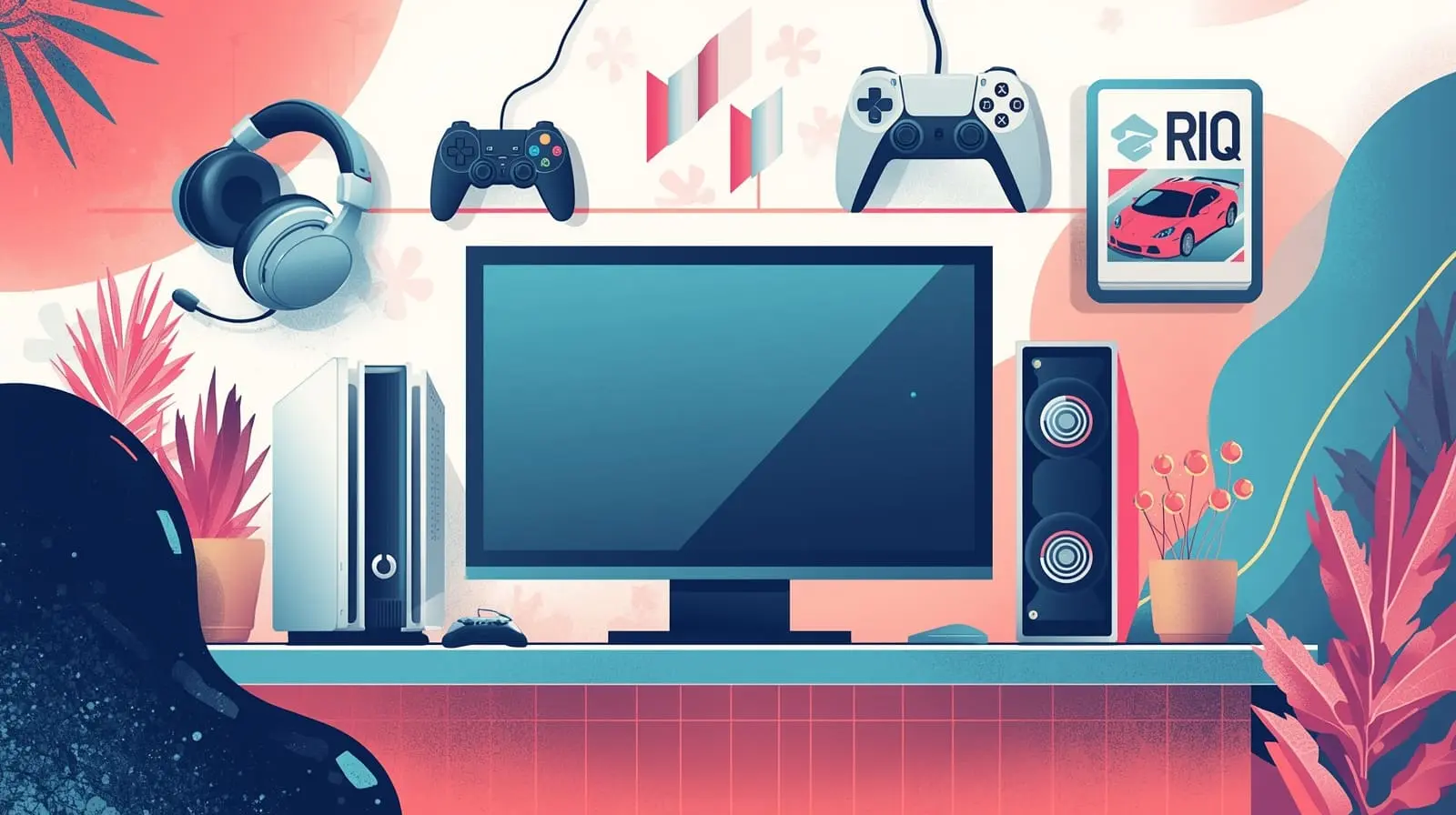
The Evolution of Platformer Games
Discover the fascinating journey of platformer games — from pixelated classics to modern masterpieces redefining the genre.
October 14, 2025
4 min read
Platformer games have played a crucial role in shaping the gaming industry, blending engaging gameplay, memorable characters, and timeless mechanics. Over the decades, these games have evolved from simple 2D side-scrollers into immersive 3D experiences, captivating millions of players worldwide. This article explores the history, transformation, and future of platformer games, highlighting key milestones, iconic titles, and industry trends.
## What Are Platformer Games?
Platformer games are a genre where players control a character navigating environments by jumping between platforms, avoiding obstacles, and defeating enemies. These games emphasize precision, timing, and reflexes. The genre is often associated with fun, accessibility, and creative level design.
### Core Elements of Platformer Games:
- **Jumping and Movement:** Fluid character motion is the foundation of the genre.
- **Level Progression:** Levels increase in difficulty, encouraging skill development.
- **Enemies and Obstacles:** Adding challenge and excitement.
- **Power-ups and Rewards:** Enhancing gameplay variety.
## The Birth of Platformers: 1980s
The platformer genre emerged in the early 1980s during the arcade boom. One of the first major milestones was the release of *Donkey Kong* in 1981, introducing vertical climbing and platform jumping mechanics. Shortly after, *Super Mario Bros.* in 1985 revolutionized gaming with smooth side-scrolling gameplay, precise controls, and innovative level design.
### Iconic Early Platformers:
1. *Donkey Kong* (1981)
2. *Super Mario Bros.* (1985)
3. *Sonic the Hedgehog* (1991)
These games laid the foundation for what platformers would become, setting standards for pacing, difficulty curves, and rewarding gameplay loops.
## The Golden Age: 1990s
The 1990s marked a golden era for platformer games. Advancements in technology allowed for more complex animations, better controls, and larger worlds. Franchises like Sonic, Rayman, and Crash Bandicoot became household names.
### Defining Characteristics of This Era:
- Smooth scrolling and fluid animations.
- Unique characters with personality and storylines.
- Creative level designs and hidden secrets.
- Memorable soundtracks that enhanced immersion.
### Standout Titles:
- *Sonic the Hedgehog 2* (1992)
- *Rayman* (1995)
- *Crash Bandicoot* (1996)
- *Banjo-Kazooie* (1998)
## The Leap to 3D: Late 1990s to Early 2000s
As consoles grew more powerful, platformers transitioned from 2D to 3D environments. Games like *Super Mario 64* set new benchmarks for level design and player freedom. This era pushed the boundaries of the genre, offering players new perspectives and gameplay possibilities.
### Key Innovations:
- Full 3D camera control.
- Non-linear exploration.
- Expanded move sets and mechanics.
- Immersive worlds with depth and detail.
### Influential Titles:
- *Super Mario 64* (1996)
- *Spyro the Dragon* (1998)
- *Jak and Daxter* (2001)
- *Ratchet & Clank* (2002)
## Modern Platformers: 2010s to Present
Modern platformers combine classic mechanics with new technologies like advanced physics engines, high-definition graphics, and online capabilities. Indie developers have also played a huge role in revitalizing the genre, delivering artistic and challenging experiences.
### Notable Trends:
- Return to 2D and 2.5D designs for nostalgic appeal.
- Innovative storytelling and emotional depth.
- Procedural generation and speedrunning communities.
- Accessibility features for wider audiences.
### Popular Modern Platformers:
- *Celeste* (2018)
- *Ori and the Blind Forest* (2015)
- *Hollow Knight* (2017)
- *Super Mario Odyssey* (2017)
## The Role of Platformers in Gaming Culture
Platformer games are more than just entertainment—they’re cultural touchstones. Many iconic game characters like Mario, Sonic, and Crash originated from platformers. These games inspired generations of players and developers, helping shape the direction of the gaming industry.
### Cultural Impact:
- Memorable characters and mascots.
- Speedrunning and competitive communities.
- Inspiration for modern game design principles.
- Cross-generational appeal.
## The Future of Platformer Games
The platformer genre continues to thrive with innovations in VR, AR, and AI-driven mechanics. Developers are experimenting with procedural levels, player-generated content, and cooperative experiences that push boundaries.
### Future Trends to Watch:
1. **VR and Immersive Experiences:** Bringing platforming into new dimensions.
2. **AI-Enhanced Level Design:** Dynamic and adaptive environments.
3. **Cross-Platform Multiplayer:** Shared adventures across devices.
4. **Narrative-Driven Gameplay:** Blending storytelling with mechanics.
## Actionable Tips for Aspiring Platformer Game Developers
If you’re considering creating your own platformer, here are some practical tips:
- **Prioritize Core Mechanics:** Smooth movement and responsive jumping are essential.
- **Design Engaging Levels:** Start simple, then build complexity.
- **Balance Difficulty:** Challenge players without frustrating them.
- **Incorporate Unique Hooks:** A special mechanic or theme can make your game stand out.
- **Playtest Early and Often:** Feedback is invaluable for refinement.
## Conclusion
Platformer games have evolved from pixelated 2D levels to breathtaking 3D worlds, but their essence remains unchanged: fun, skill-based gameplay that rewards mastery. Whether you're a casual player or a developer looking to innovate, the platformer genre continues to offer endless possibilities.
Their lasting impact proves that sometimes, the simplest mechanics create the most enduring experiences. As technology advances, platformers will continue to reinvent themselves while honoring their legendary past.
## What Are Platformer Games?
Platformer games are a genre where players control a character navigating environments by jumping between platforms, avoiding obstacles, and defeating enemies. These games emphasize precision, timing, and reflexes. The genre is often associated with fun, accessibility, and creative level design.
### Core Elements of Platformer Games:
- **Jumping and Movement:** Fluid character motion is the foundation of the genre.
- **Level Progression:** Levels increase in difficulty, encouraging skill development.
- **Enemies and Obstacles:** Adding challenge and excitement.
- **Power-ups and Rewards:** Enhancing gameplay variety.
## The Birth of Platformers: 1980s
The platformer genre emerged in the early 1980s during the arcade boom. One of the first major milestones was the release of *Donkey Kong* in 1981, introducing vertical climbing and platform jumping mechanics. Shortly after, *Super Mario Bros.* in 1985 revolutionized gaming with smooth side-scrolling gameplay, precise controls, and innovative level design.
### Iconic Early Platformers:
1. *Donkey Kong* (1981)
2. *Super Mario Bros.* (1985)
3. *Sonic the Hedgehog* (1991)
These games laid the foundation for what platformers would become, setting standards for pacing, difficulty curves, and rewarding gameplay loops.
## The Golden Age: 1990s
The 1990s marked a golden era for platformer games. Advancements in technology allowed for more complex animations, better controls, and larger worlds. Franchises like Sonic, Rayman, and Crash Bandicoot became household names.
### Defining Characteristics of This Era:
- Smooth scrolling and fluid animations.
- Unique characters with personality and storylines.
- Creative level designs and hidden secrets.
- Memorable soundtracks that enhanced immersion.
### Standout Titles:
- *Sonic the Hedgehog 2* (1992)
- *Rayman* (1995)
- *Crash Bandicoot* (1996)
- *Banjo-Kazooie* (1998)
## The Leap to 3D: Late 1990s to Early 2000s
As consoles grew more powerful, platformers transitioned from 2D to 3D environments. Games like *Super Mario 64* set new benchmarks for level design and player freedom. This era pushed the boundaries of the genre, offering players new perspectives and gameplay possibilities.
### Key Innovations:
- Full 3D camera control.
- Non-linear exploration.
- Expanded move sets and mechanics.
- Immersive worlds with depth and detail.
### Influential Titles:
- *Super Mario 64* (1996)
- *Spyro the Dragon* (1998)
- *Jak and Daxter* (2001)
- *Ratchet & Clank* (2002)
## Modern Platformers: 2010s to Present
Modern platformers combine classic mechanics with new technologies like advanced physics engines, high-definition graphics, and online capabilities. Indie developers have also played a huge role in revitalizing the genre, delivering artistic and challenging experiences.
### Notable Trends:
- Return to 2D and 2.5D designs for nostalgic appeal.
- Innovative storytelling and emotional depth.
- Procedural generation and speedrunning communities.
- Accessibility features for wider audiences.
### Popular Modern Platformers:
- *Celeste* (2018)
- *Ori and the Blind Forest* (2015)
- *Hollow Knight* (2017)
- *Super Mario Odyssey* (2017)
## The Role of Platformers in Gaming Culture
Platformer games are more than just entertainment—they’re cultural touchstones. Many iconic game characters like Mario, Sonic, and Crash originated from platformers. These games inspired generations of players and developers, helping shape the direction of the gaming industry.
### Cultural Impact:
- Memorable characters and mascots.
- Speedrunning and competitive communities.
- Inspiration for modern game design principles.
- Cross-generational appeal.
## The Future of Platformer Games
The platformer genre continues to thrive with innovations in VR, AR, and AI-driven mechanics. Developers are experimenting with procedural levels, player-generated content, and cooperative experiences that push boundaries.
### Future Trends to Watch:
1. **VR and Immersive Experiences:** Bringing platforming into new dimensions.
2. **AI-Enhanced Level Design:** Dynamic and adaptive environments.
3. **Cross-Platform Multiplayer:** Shared adventures across devices.
4. **Narrative-Driven Gameplay:** Blending storytelling with mechanics.
## Actionable Tips for Aspiring Platformer Game Developers
If you’re considering creating your own platformer, here are some practical tips:
- **Prioritize Core Mechanics:** Smooth movement and responsive jumping are essential.
- **Design Engaging Levels:** Start simple, then build complexity.
- **Balance Difficulty:** Challenge players without frustrating them.
- **Incorporate Unique Hooks:** A special mechanic or theme can make your game stand out.
- **Playtest Early and Often:** Feedback is invaluable for refinement.
## Conclusion
Platformer games have evolved from pixelated 2D levels to breathtaking 3D worlds, but their essence remains unchanged: fun, skill-based gameplay that rewards mastery. Whether you're a casual player or a developer looking to innovate, the platformer genre continues to offer endless possibilities.
Their lasting impact proves that sometimes, the simplest mechanics create the most enduring experiences. As technology advances, platformers will continue to reinvent themselves while honoring their legendary past.
Published: October 14, 2025
Share this article:


